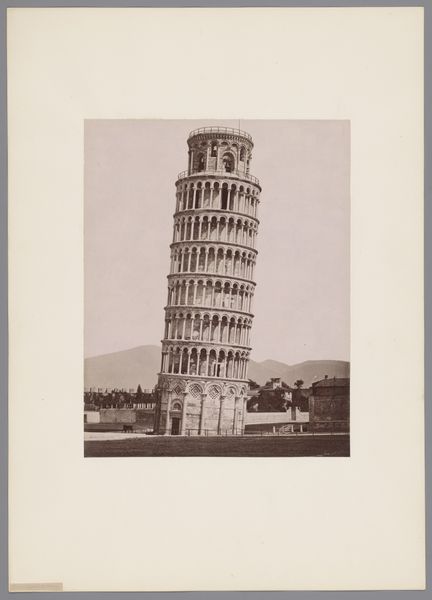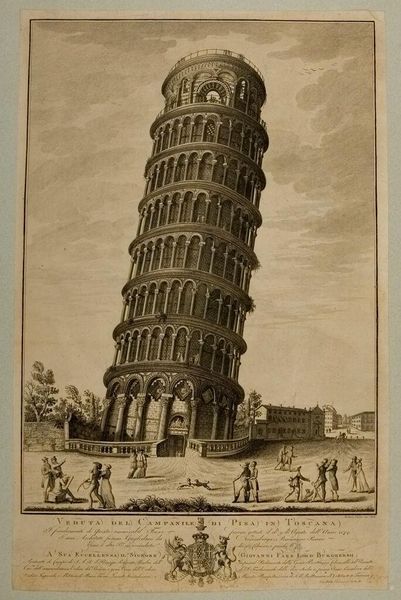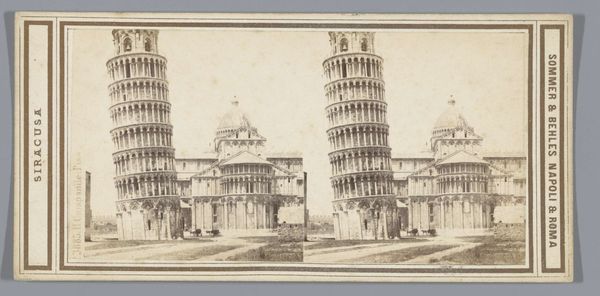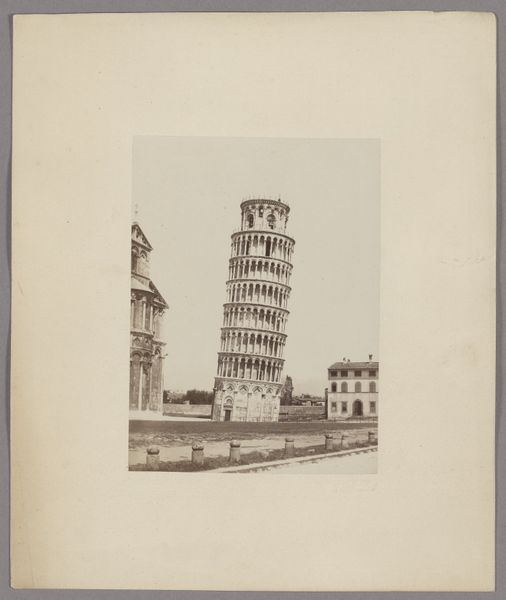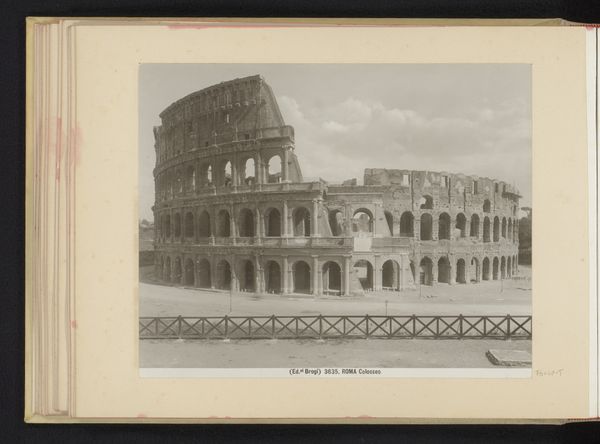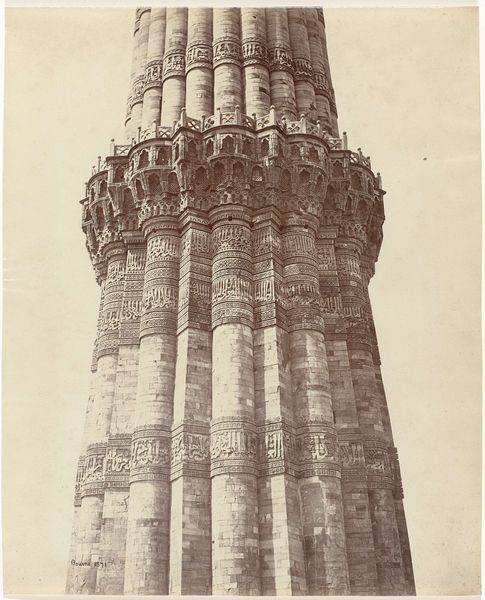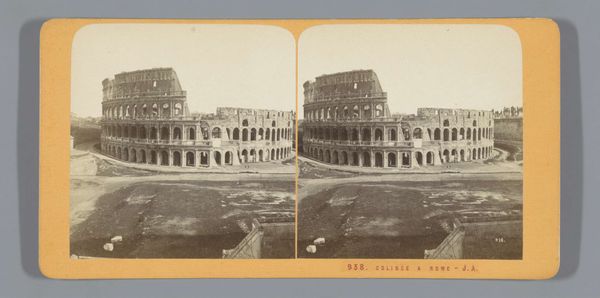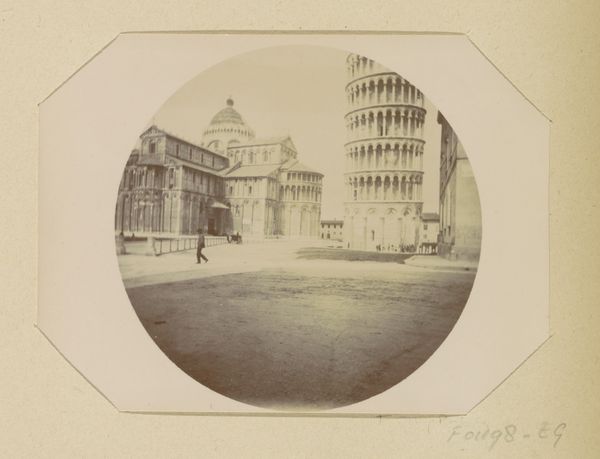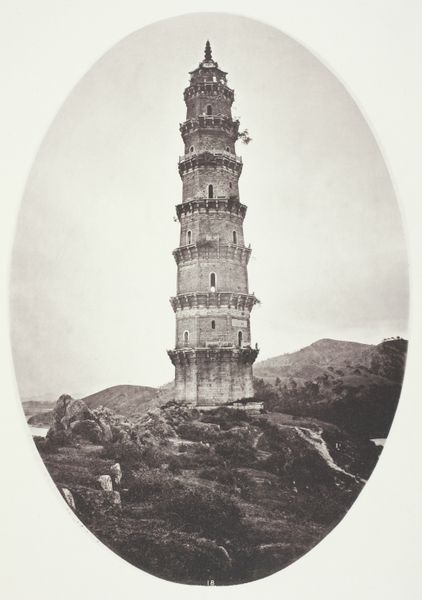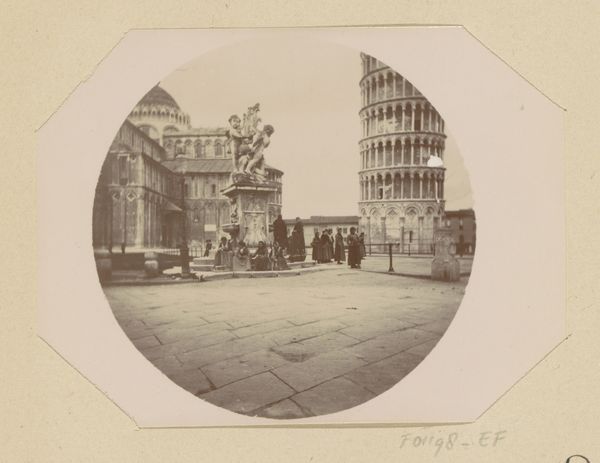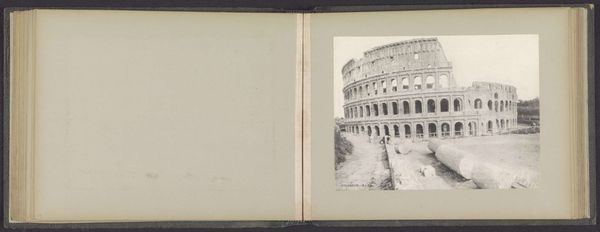
photography, gelatin-silver-print, architecture
#
landscape
#
photography
#
gelatin-silver-print
#
cityscape
#
italian-renaissance
#
architecture
#
realism
Dimensions: height 103 mm, width 62 mm
Copyright: Rijks Museum: Open Domain
Editor: This is a gelatin silver print titled "Klokkentoren van de Dom van Pisa", or Leaning Tower of Pisa, by Enrico van Lint, dated between 1855 and 1880. It's so interesting to see such an iconic landmark captured through early photography. The contrast between the detail in the architecture and the soft focus of the landscape is quite striking. What aspects of its visual structure stand out to you? Curator: I’m drawn to the composition, especially how van Lint uses the tower’s dramatic tilt not as a flaw but as the primary visual element. The verticality is aggressively asserted against a horizontal plane, the foreground creating a spatial tension. The photographer clearly plays with positive and negative space, with the sky as void allowing the architectural details of the tower to take center stage. Notice the columniation of receding arcades and registers; how might we apply serialism here? Editor: Serialism as a reading strategy for architecture? That's unexpected, but interesting! So you're suggesting that the tower's repeated arches and levels create a visual rhythm, almost like a musical sequence. What is the relation to semiotics here? Curator: Precisely. The repetition isn’t merely decorative, it signifies something. These are symbolic of classicism that is slowly failing to do what is expected of it, instead of upholding order they symbolize entropy through a slanting architecture, a lack of intended vertical structure, challenging our perception and inviting reinterpretation. Consider this: if the structural elements "speak", what message do they communicate as an intentional departure? Editor: This has really altered my view! I initially saw this photograph simply as a historical document. Curator: But you now recognise, that even a representational form is underpinned by structure. What appears indexical of the external world, can be read by us as indexical of other factors. Now look, is anything else grabbing your attention?
Comments
No comments
Be the first to comment and join the conversation on the ultimate creative platform.



